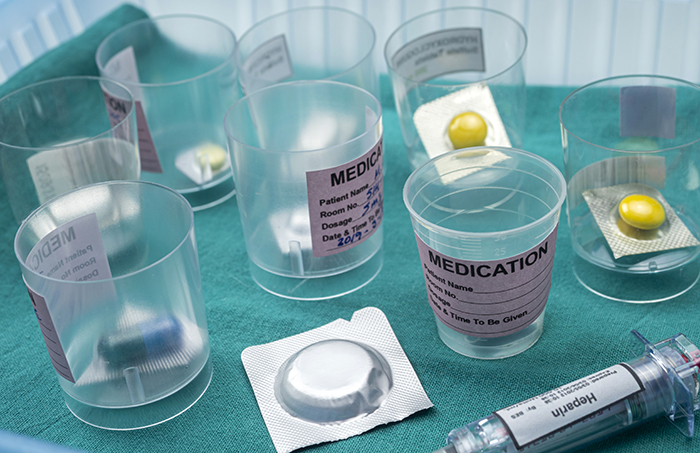Understanding Deliverable Volume and Uniformity of Dosage

Deliverable volume and uniformity of dosage units as outlined by USP<698> and <905>, respectively, are used to evaluate the accuracy and consistency of dosage units to ensure confidence in drug substance content. These USP chapters apply to single dose units or doses dispensed by pouring from the primary packaging into associated package components such as oral dispensing syringes or dosing spoons. Examples of package systems that incorporate delivery devices include:
-
- Dose Cups for Liquid Products
- Pre-Filled Syringes
- Auto Injectors
- Metered Dose Systems
- Graduated Syringes for Multiple Dose Levels
Manufacturers have a regulatory responsibility to ensure the product delivery devices meet specific standards of actual (intended) deliverable volume and to meet regulatory guidelines, it is ideal to ensure that the USP Concepts as outlined in general chapter <659> be used. While the USP provides a general guideline, they specifically address the question of “How can I meet the requirements of deliverable volume?” with the following response:
“General Chapter <698> Deliverable Volume is intended to assure that the patient receives the intended volume of the packaged contents as indicated on the product label with a variety of dosing and delivery systems for oral liquids. Other than using the testing procedures described in the chapter, you can use alternative methods to satisfy the <698> requirements per USP General Notice 6.30. Alternative and Harmonized Methods and Procedures. Such studies may be done during development or post-development and they should be supported by data that justifies the approved fill volume and delivered volume targets.”
Based upon the USP directive, in most cases the most effective test approach involves the development of a test protocol specific to the product and the package system. An effective and valid dose accuracy test protocol should include the following:
- Stated objective to include background information and a rationale for performance of the testing with refence to relevant USP chapters.
- The scope shall identify the product and package system to be tested.
- Key definitions of terminology. Examples of such include:
a. Associated Component: A packaging component that is typically intended to deliver the drug article to the patient but is not stored in contact with the article for its entire shelf life.
b. Dosage Units: Dosage forms containing a single dose or part of a dose of drug substance in each unit.
c. Packaging Component: Any single part of the package or container-closure system.
d. Uniformity of Dosage Unit: The degree of uniformity in the amount of drug substance among dosage units
- List of equipment and materials to be used in the execution of the testing.
- Specific and detailed (step by step) instructions for the procedural steps to be performed.
- Defined acceptance criteria.
As a final consideration, as this testing specifically referenced by way of USP general chapter guidelines, all work should be performed in a cGMP manner that ensures the use of calibrated and qualified instruments and laboratory analysts trained in the performance of this type of testing. In addition, all work performed shall be subject to strict quality standards and oversight.
The CS Analytical team has the experience and knowledge across multiple product types and unique delivery systems to ensure an effective “dose delivery” test program can be developed and implemented specific to your drug products. The laboratory is equipped with all the necessary tools required to include a variety of NIST traceable standards, balances covering a range of weight requirements, and enhanced digital and optical measurement systems that ensure quality control testing of dose and delivered volume accuracy exceeds regulatory expectations to safeguard patient safety.

